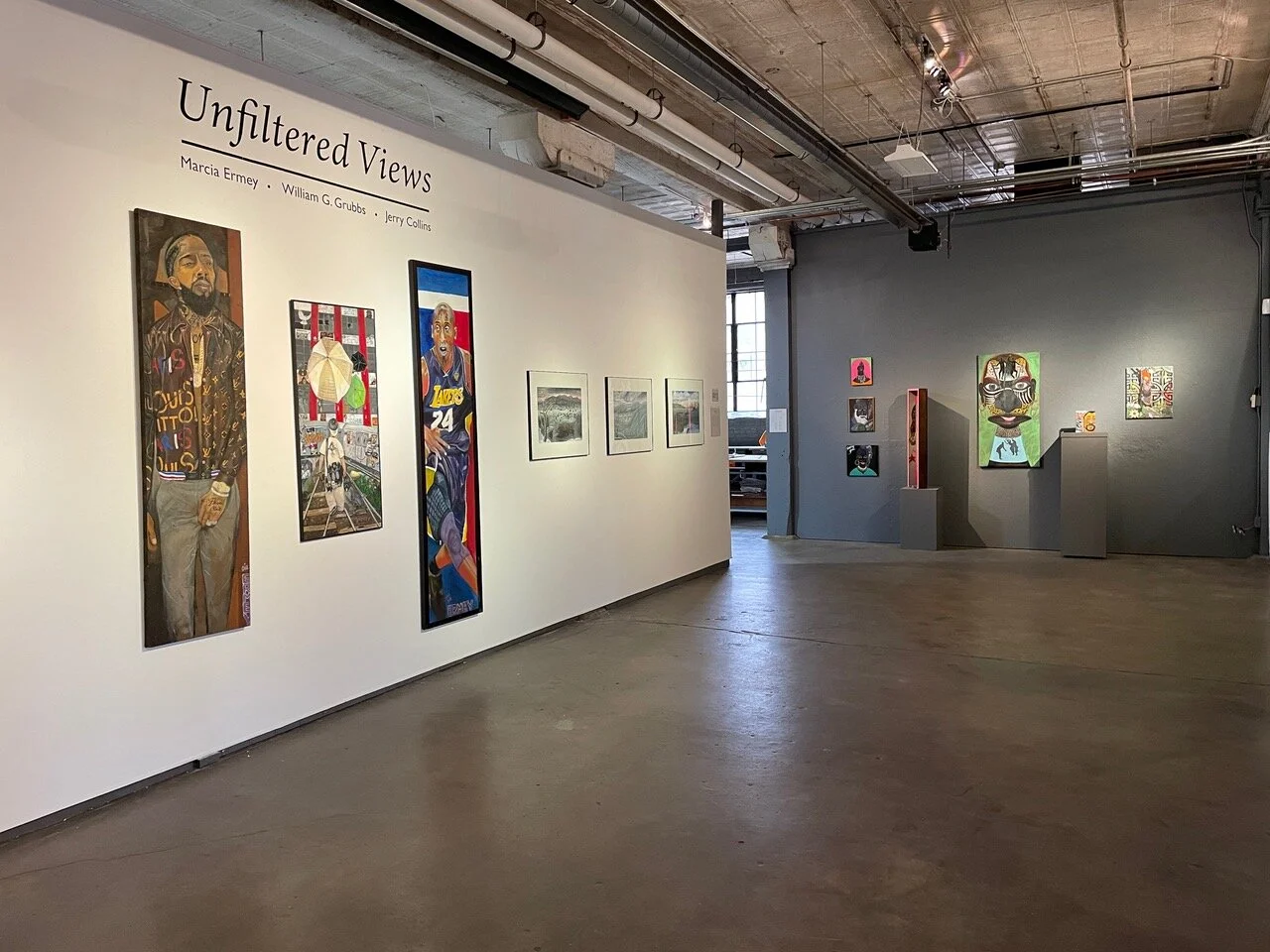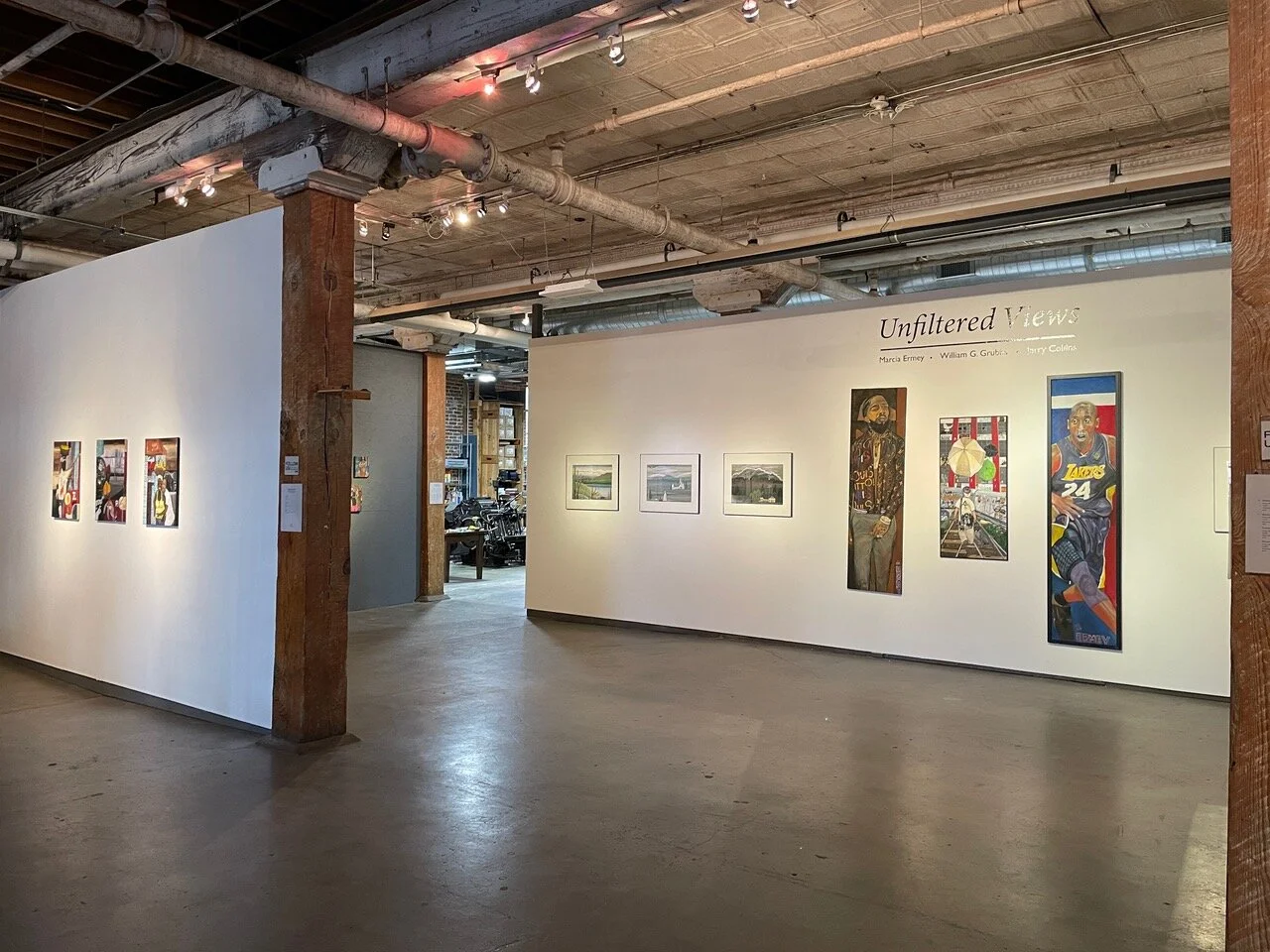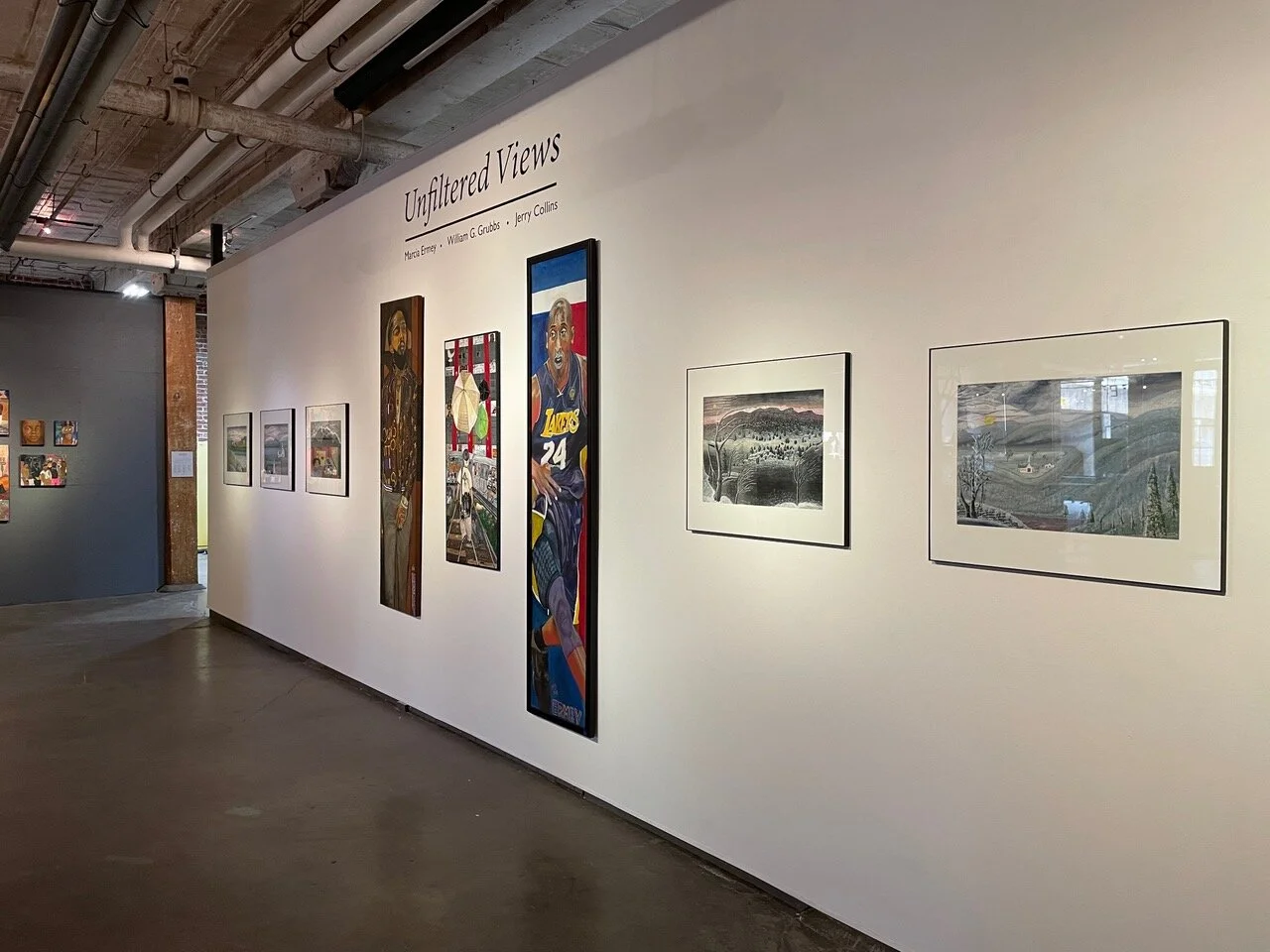Unfiltered Views by Marcia Ermey, William G. Grubbs and Jerry Collins
Didactic by Laura Warriner
For many years, my husband and I frequented antique stores and flea markets, always scanning for forgotten handmade objects and furniture. Another love of ours was the SOFA show, held every October at the Navy Pier in Chicago. It was the highlight of our year! Through SOFA, I had the pleasure of being exposed to Aminah Robinson's work. I instantly related to her body of work, and it moved me as nothing had before. In my mind, her work was Art Brut, but I learned from talking with her she had attended the Columbus Art School (now the Columbus College of Art and Design). I was delighted to see how academia adopted this style once known to me as unacceptable within these establishments. Regardless, Aminah Brenda Lynn Robinson led me to cherish what I currently refer to as Outsider Art.
Roger Cardinal, an art scholar and professor at the University of Kent in Canterbury, England, originated the term "outsider art." He describes the term as creative works produced by self-taught artists (that is, artists with no formal art training) that do not follow traditional or academic artistic conventions and convey "a strong sense of individuality'.
Unlike Aminah, the three artists represented in this exhibition are genuinely Outsider Artists. Not only in esthetics but by classical definition as well. They have all come to create this bold and extremely individual work on their own: no classical training, no ring of the bell, just a desire to expose their inner voice.
William Grant Grubbs was born in 1882 and died in 1970, living most of his life in Stigler, Oklahoma. Grubbs farmed, and when he became ill around 1952, it left him unable to continue his life work. So at the age of 70, he began to paint the landscape surrounding him. Catlyn Lester, his granddaughter, said she spent many hours on a screened-in porch watching him paint. Since she was a young girl, she never thought to ask many questions about his process. She was just around to witness the creation of his prolific work. William did most of the paintings on Strathmore watercolor pads and even painted on their covers. He never signed his paintings or even removed them from the pads.
Marcia Ermey was born in Jamaica and moved to the US in 1981, the same year she entered the Air Force. Her artistic interpretation began as a child when she would create objects out of bones collected from the woods nearby. Starting to draw since there was no access to paints, Marcia gradually moved closer to acrylics and oils when she received her first set of colored pencils. Marcia was an only child and felt that art was an ideal companion in her quiet downtime. She sometimes focused more on life than her practice but was eternally drawn back to painting. Art is in her essence and defines her personhood. Marcia would like to extend herself to other areas of her practice moving forward, going back to that gift as a child to create objects and sculptures from things discovered nearby.
Jerry Collins was born in Ann Arbor, Michigan, and began creating artwork as a child. He mostly drew animals on paper but quickly became interested in working with wood and paints. When asked when he knew he was an artist, Jerry responded, "it's been in my blood since I was a kid ." Jerry began to work as a carpenter out of high school and held various positions as a tradesman in multiple states. He finally settled in Oklahoma 15 years ago and has sold his creations to every type of person you can imagine. Jerry likes to stand in the street to sell his work, a grassroots type of salesmanship. One time he had a city bus driver pull over and ask him if he could make her an elephant. Suggestions are welcomed from patrons and help his imagination expand. A hummingbird here, a cross there, an octopus even once was asked of the artist. This practice allows Jerry to create his world, authentic connections with his fellow human, and a new commission around every corner.







